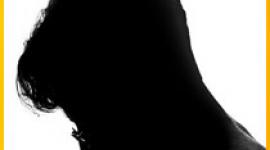Distorted Body Image Can Have Tragic Results
Why is it that so many women feel bad about the way they look? Why do most American females, regardless of their age, think they are too fat? Why do 9 over 75 percent of fourth-grade girls report that they are "on a diet?"
The term "body image" has been coined to describe a person's inner sense of satisfaction or dissatisfaction with the physical appearance of her/his body. For most of us, our body image reflects reality: whether we gain or lose a few pounds, achieve muscular definition through exercise or develop "love handles," we generally know it. Our body image is a relatively accurate reflection of our morphology.
But some have body images that are totally out of whack, with perceptions of form and appearance that are extraordinarily distorted. These people are usually women; and although we tend to associate such misperception of one's appearance with anorexia (self-starvation) or bulimia (repeated binging and purging), research now shows that "normal" women suffer from these same body-image problems. In other words, women who have no clinical eating disorder or weight problem-who appear objectively fine-look in the mirror and see ugliness and fat. Why does this happen?
Images of female success and fashion portray the ideal woman as smart, popular, successful, beautiful and always portrayed as very thin (the average fashion model weights 25 percent less than the average woman). Pressure to measure up is great, and is constantly reinforced by family and friends, as well as advertising and popular media. Women still are taught that their looks will determine their success, and that thin equals beautiful. Whenever there is a gap between the cultural image of this ideal woman and an individual's self-perception, consequences may be temporary or only negligibly significant. For others, anxiety, depression, reclusiveness, chronically low self-esteem, compulsive dieting or eating disorders may develop. The results can be tragic: 25 percent -30 percent of women with eating disorders remain chronically ill, and 15 percent will die prematurely.
 Information about the symptoms of and treatment for eating disorders is readily available from a variety of sources. Perhaps a rudimentary focus, therefore, would be to ask the question, what can women do to avoid the trap of negative body image and eating disorders? The following are some beginning steps:
Information about the symptoms of and treatment for eating disorders is readily available from a variety of sources. Perhaps a rudimentary focus, therefore, would be to ask the question, what can women do to avoid the trap of negative body image and eating disorders? The following are some beginning steps:
- Realistically view your genetic shape. Study photos of your mother, grandmothers, aunts and sisters to get a sense of their family genes for body shape.
- Participate in non-competitive physical exercise (dance, yoga, bicycling).
- Analyze your body image. What situations make you feel fat? What do you do when you feel fat? Identify negative thoughts and challenge them with positive affirmations.
- Adopt a healthy eating plan for life-give up "going on diets."
- Look at your self esteem holistically: What is truly, ultimately important to you? What are your skills and talents? What kind of person do you want to be?
The answers to those questions should start you on a path to a healthy body image and help you avoid the dangers of negative body image.
next: Eating Disorders: Body Image and Advertising
~ eating disorders library
~ all articles on eating disorders
APA Reference
Gluck, S.
(2008, December 12). Distorted Body Image Can Have Tragic Results, HealthyPlace. Retrieved
on 2026, January 7 from https://www.healthyplace.com/eating-disorders/articles/distorted-body-image-can-have-tragic-results


